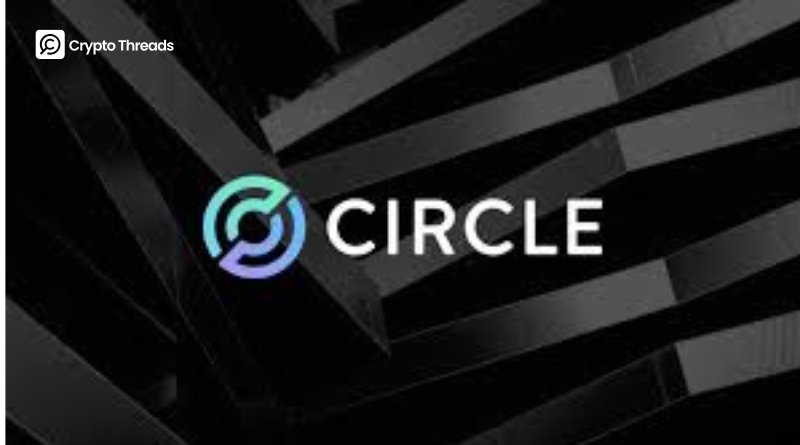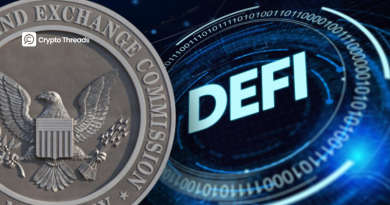Circle to Launch Arc Blockchain Using USDC as Gas Token
Key Takeaways:
- Circle will launch Arc, a new enterprise-grade layer-1 blockchain, later this year.
- Arc will use USDC as its native gas token for transaction fees.
- Q2 revenue and reserve income rose 53% year over year to 658 million dollars.
- Circle posted a 482 million dollar net loss due to IPO-related non-cash charges.
- USDC market cap stands at 65.6 billion dollars across 24 networks, with Ethereum holding the largest share.
Circle Unveils Arc Blockchain with USDC as Native Gas
Circle, the publicly traded US company behind the USDC stablecoin, has announced plans to launch Arc, its own layer-1 blockchain later this year. Designed to be compatible with the Ethereum Virtual Machine (EVM), Arc aims to provide an enterprise-grade infrastructure for stablecoin payments, foreign exchange, and capital markets applications.
According to the company, Arc will enter public testnet before its full release and will feature USDC as its native gas token, allowing transaction fees to be paid directly in the stablecoin. The network will also integrate a stablecoin foreign exchange engine, enable settlement finality in under a second, and offer optional privacy controls for users.
Circle described Arc as “purpose-built for stablecoin finance,” positioning it as a major step in its goal to deliver a “full-stack platform for the internet financial system.” Arc will be fully integrated into Circle’s existing platform and services while remaining interoperable with the dozens of other blockchains that Circle already supports.
At the time of the announcement, USDC had a market capitalization of 65.6 billion dollars and was active on 24 different blockchain networks. Ethereum currently hosts the largest share of USDC supply at 42.6 billion dollars, according to Circle data.
Q2 Revenue Growth Offset by IPO-Related Net Loss
Alongside the Arc announcement, Circle released its second-quarter financial results. The company reported total revenue and reserve income of 658 million dollars for Q2, reflecting a 53% increase compared with the same period in the previous year.
Despite the strong top-line growth, Circle posted a net loss of 482 million dollars for the quarter. The company attributed this primarily to expenses related to its initial public offering, which included significant non-cash charges totaling 591 million dollars. These charges comprised 424 million dollars in stock-based compensation tied to vesting conditions and 167 million dollars in increased fair value of convertible debt due to a rise in Circle’s share price.
Data from Circle’s unaudited condensed consolidated statements of operations. Source: Circle
Circle completed its IPO on June 5, raising 1.05 billion dollars and listing on the New York Stock Exchange under the ticker CRCL at an initial price of 69 dollars per share. The stock surged to an all-time high of 292.8 dollars on June 23 before retreating in subsequent weeks. As of Monday, CRCL closed at 161.2 dollars, down more than 21% over the past month.
The launch of Arc signals Circle’s entry into the growing competition among both crypto-native companies and traditional finance institutions to develop proprietary blockchain networks. The trend has been accelerating in recent months.
Fortune recently reported that fintech giant Stripe is developing a blockchain network called Tempo in collaboration with venture capital firm Paradigm. In late June, Robinhood launched a layer-2 blockchain platform focused on tokenization. Earlier in mid-June, Shopify enabled early access to USDC payments on Coinbase’s Base network, expanding stablecoin payment adoption in e-commerce.
With Arc, Circle is not only strengthening its control over the infrastructure supporting USDC but also positioning itself as a leader in enterprise-focused blockchain services. The integration of USDC as a native gas token could drive greater adoption of the stablecoin in payment and settlement processes, offering businesses and institutions a more streamlined experience.
Industry analysts view Circle’s move as part of a broader strategy to diversify revenue streams beyond stablecoin issuance. By creating a dedicated blockchain ecosystem, Circle can capture more value from transaction fees, cross-border payment flows, and financial services built on Arc.
The combination of strong revenue growth, despite short-term IPO-related losses, and the strategic launch of Arc reflects Circle’s ambition to remain at the forefront of blockchain-based finance. If Arc achieves its stated goals of sub-second settlement and enterprise-grade stability, it could become a significant infrastructure layer for global digital payments and capital markets in the years ahead.



